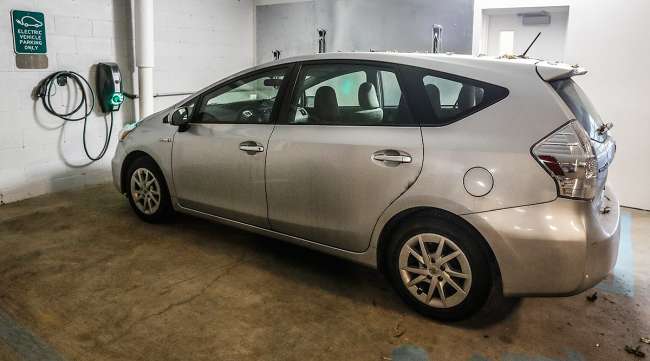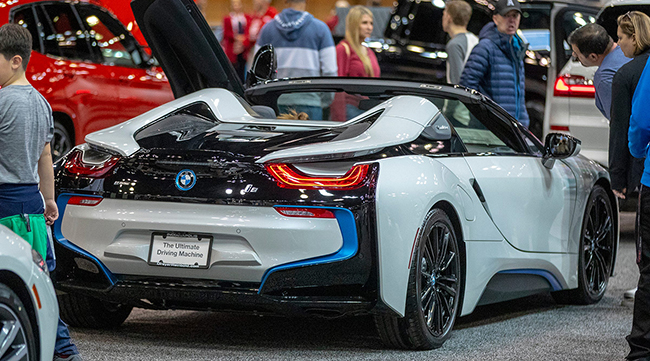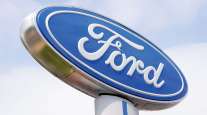Indianapolis Star
Indiana Gives Utilities $5.5 Million to Build EV Charging Network

[Stay on top of transportation news: Get TTNews in your inbox.]
If you build it, they will come. At least that’s what the state of Indiana and its utilities are hoping for when it comes to charging stations and electric vehicles.
Indiana is behind on infrastructure for plug-powered vehicles, while some of its Midwestern neighbors and other states across the country speed ahead with installing charging networks.
It’s a bit of a chicken and egg issue: Without more people driving electric vehicles, companies don’t want to invest in installing stations and building out the infrastructure. But without the infrastructure, drivers don’t know if they can get from A to B and are hesitant to buy electric vehicles.

Garvin
“I would say the state of Indiana has been lacking in EV infrastructure, and I don’t think anyone would argue with that,” said Kerri Garvin, executive director of Greater Indiana Clean Cities, a nonprofit focused on advancing alternative fuel vehicles. “That’s a big deal.”
There are a few hundred fully electric models expected by 2025 and it is predicted that annual EV sales will exceed 1.2 million by that same year. That growth — as well as the environmental and economic benefits that go with it — could pass Indiana by if the state doesn’t take some big steps, Garvin said.
So that’s just what it’s doing.
The state of Indiana got a big chunk of change as part of the multibillion-dollar settlement with Volkswagen that resulted from the company manufacturing and installing defective emissions-control devices in hundreds of thousands of diesel-powered vehicles. With some of that money, Indiana is awarding grants to build out a charging network for electric vehicles across the state.
The biggest of those grants, worth $5.5 million, was recently awarded to a group of utilities to add more than 60 fast-charging stations — or those that charge within about a half-hour — across the state.
Still, many say this is just the beginning.
“I don’t think we could have expanded this way or to this scale at all without the grant,” said Beverly Gard, chairman of the VW Fund Mitigation Committee. “I think Indiana would be set back years without this funding.”
Removing Range Anxiety
The Indiana VW Committee was formed in 2017 to help disburse Indiana’s share of the funds from Volkswagen’s settlement over clean air violations. The settlement came about to resolve allegations that the company installed devices in its diesel-engine cars that emitted levels of dangerous air pollutants in excess of EPA regulations.
That’s why the funds from the settlement have to go toward replacing diesel emission sources with cleaner technology. Indiana received approximately $41 million.
While the majority of those funds are earmarked to be used for heavy-duty vehicles — such as getting electric school buses, city buses and heavy-duty trucks — states can designate up to 15% to go toward light-duty vehicles or electric cars.
Indiana decided to go the full 15%, or $6.15 million. About $600,000 is for level 2 chargers or those that charge more slowly while drivers are in a mall or at the movies. The rest is for the DC fast chargers, or direct current chargers, which can power up a car with more than 80 miles of range in just a half hour.
Some states are farther along than others, and Indiana is not near the front of the pack.

An all-electric i8 by BMW on display at the 2020 Indianapolis Auto Show. (IndyStar)
There currently are around 215 level 2 chargers around the state, but those are not for hub-to-hub travel, said Shawn Seals with the Indiana Department of Environmental Management. When it comes to DC fast chargers, Indiana has only 19 that any brand of car can use — there also are 15 Tesla-only superchargers.
Garvin with Clean Cities said that’s the top barrier to folks purchasing electric vehicles: Range anxiety.
Even if drivers plan to do a long trip only once or twice a year, that introduces anxiety on whether those cars will be able to get them there, she said. That’s why they need the fast-charging network along their route.
“This is really important and happening in a lot of other states,” Gard said. “It would be a shame to have networks everywhere and then you come to our state and can’t drive across Indiana in your electric car.”
Utilities Provide the Fuel: Electricity
In May, Indiana’s VW Committee awarded a group of eight utilities across the state $5.5 million to install 61 of the fast chargers across the state. That group includes Duke Energy, NIPSCO, AES Indiana (formerly IPL) as well as some other smaller providers.
Over the course of several months, the state considered four different finalists to install the fast chargers. Various factors that they looked at include how many chargers they planned to install, the proposed locations, the distance between chargers and the cost-effectiveness or cost per charger.
At 61, the utility group proposed the most chargers of any of the groups; the others suggested only about half that, between 30 and 40. The chargers in the utility’s proposal were also the most cost-effective: planning to cost around only $90,000 each. The cost for the others was at least $40,000 more per charger.
But the utilities have something else that sets them apart, too: They are the direct providers of the fuel for the charging stations.
“If anyone is able to invest in that infrastructure, it’s the ones controlling and managing the fuel, or the electricity, going to the chargers,” Garvin said. Any of the other companies would have to coordinate with the utilities to get the power, she added, and that tacks on time and money.

Wallpe
The utilities first came together about four years ago with this idea to help build out the network, and knew that there would be some funds available to do so, said Jordan Wallpe, the Midwest electric transportation manager for Duke Energy.
“We already are in the neighborhoods, we know the customer base, we know the locations they need to go, and we have access to the vendors for the hardware and equipment,” Wallpe said. “We have the knowledge and the base, and that started the whole journey.”
The stations will be on all of Indiana’s major highways: I-65, I-70, I-69, I-64 and the I-465 loop. They also will run north and south along U.S. 31 as well as be dotted along southern Indiana’s I-64 and northern Indiana’s I-90. In addition to the few chargers currently out there, most will be no more than 50 to 100 miles apart, IDEM’s Seals said.
When picking the best locations, the utilities focused on those that are within one mile of an exit, have ample power supply, and have good amenities nearby like a shopping plaza, fuel center or restaurant. Each utility will pick its own hardware, Wallpe said, but there will be minimum speed times for charging.
The goal is to get the funding on the streets as soon as possible. Some of the utility group’s first few fast-charging stations could come online as early as this year, according to Wallpe. But most stations will be done in 2022 and the last ones finished up in early 2023.
Catalyst for Electric Cars
The utilities don’t yet know how much it will cost to charge at each station, Wallpe said, but it will vary depending on the utility that oversees the station.
There are still a lot of unknowns, Wallpe added, such as how many drivers will use the stations. Based on those utilization rates, the stations could be self-sustaining and pay for themselves to stay on top of maintenance.
If you build it, they will come.
At least that's the mantra the state of Indiana is going by: If they build EV chargers, will the EVs come?
I looked into the state's efforts (including a $5.5M grant) to expand its EV charging network for @indystar: https://t.co/7MaT2C9PCi — Sarah Bowman (@IndyStarSarah) July 19, 2021
If the infrastructure is here, the idea is that the demand for EVs will shortly follow, especially as their cost continues to come down. And if there’s demand, then the idea is that supply will follow, Garvin said. Most people that want to buy an EV currently have to drive to Chicago, she said, because that’s where the options are.
Garvin said she can think back to when gas stations were put in and the next one would not be for another 50 miles, but now they are at every exit. She thinks it will be like that with EV stations, not because it’s needed but out of convenience like with gas stations.
She sees the state’s current effort as a catalyst.
“Will there still be spots where charging stations are needed? Sure,” Garvin said. “But this is a very good starting point.”
Want more news? Listen to today's daily briefing below or go here for more info:
Distributed by Tribune Content Agency, LLC




